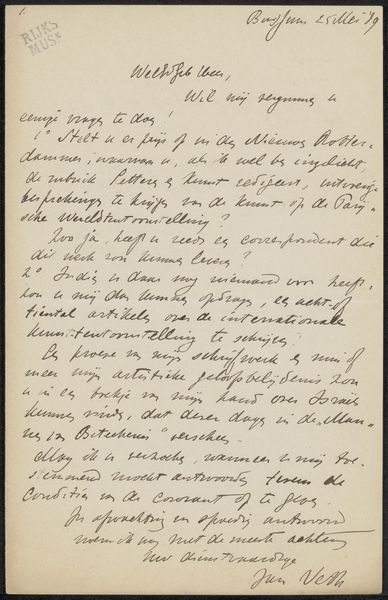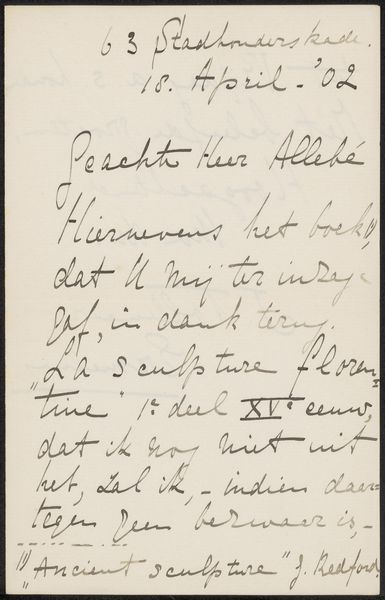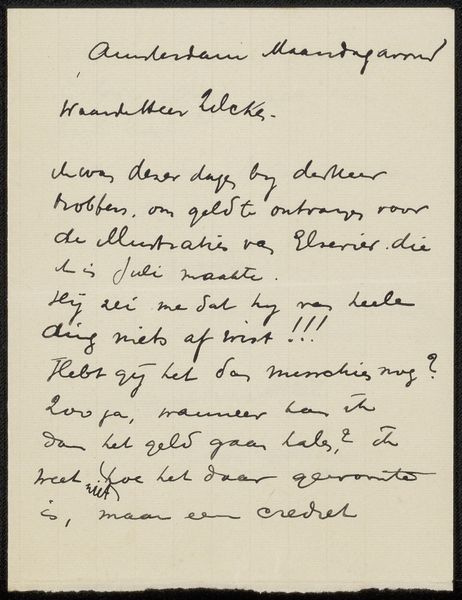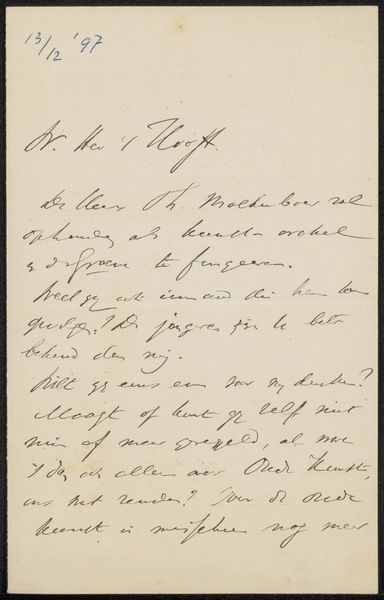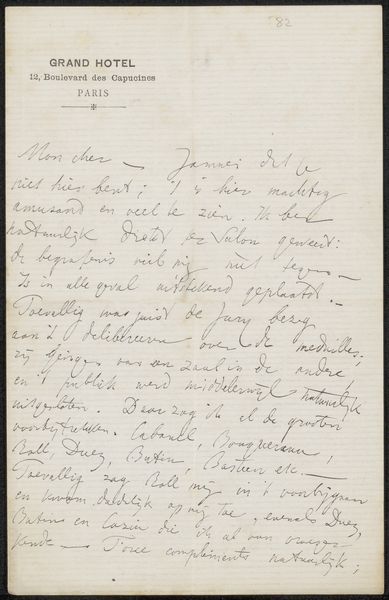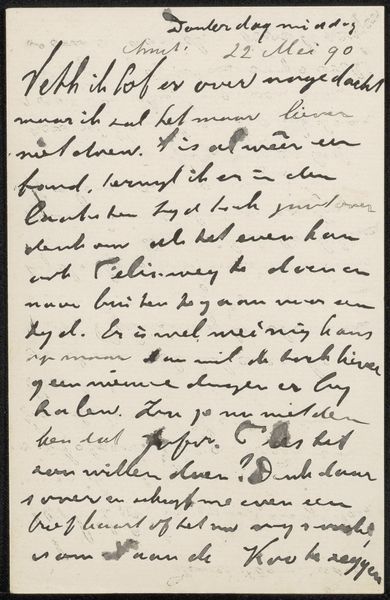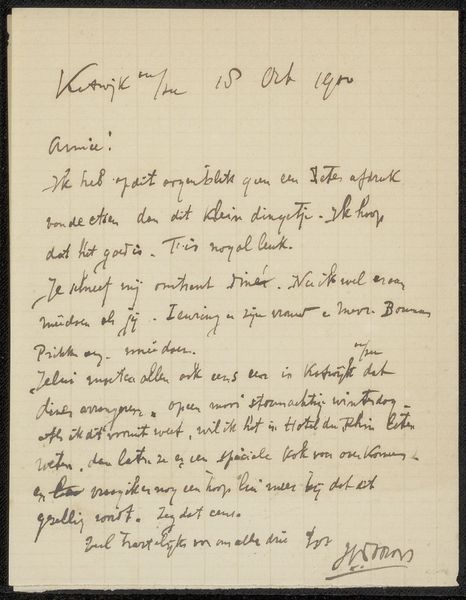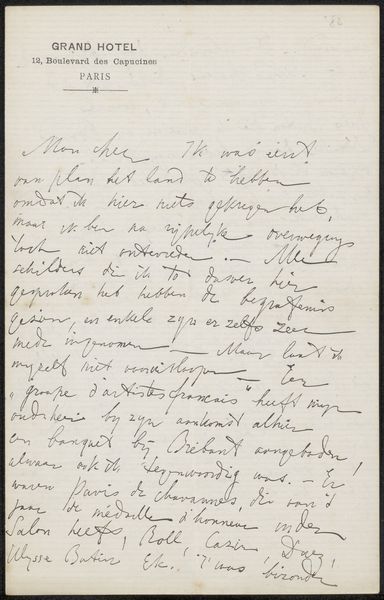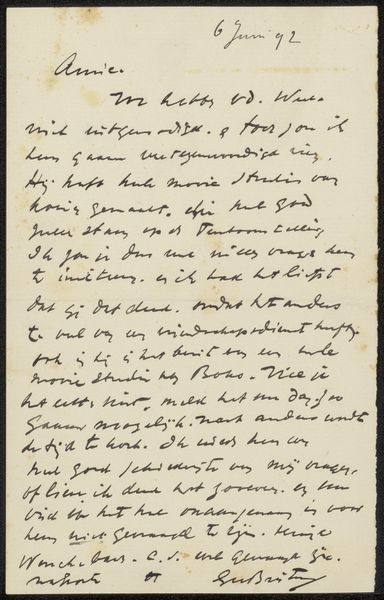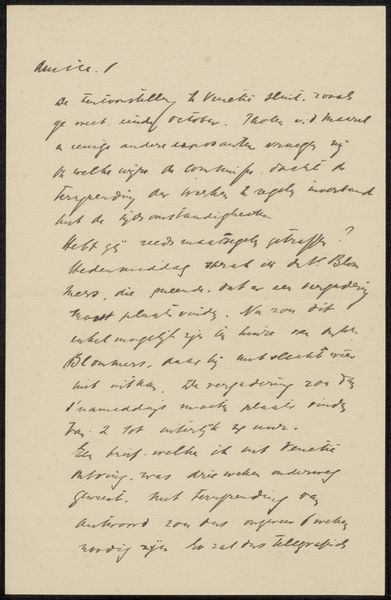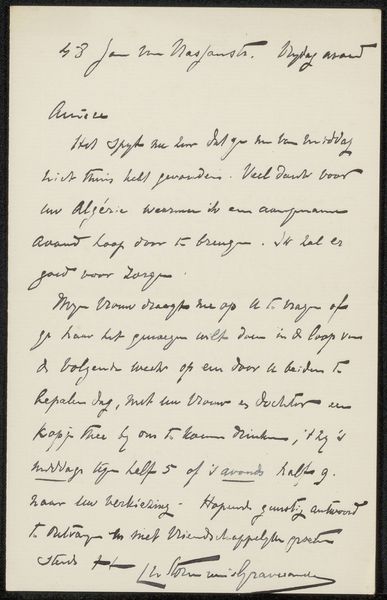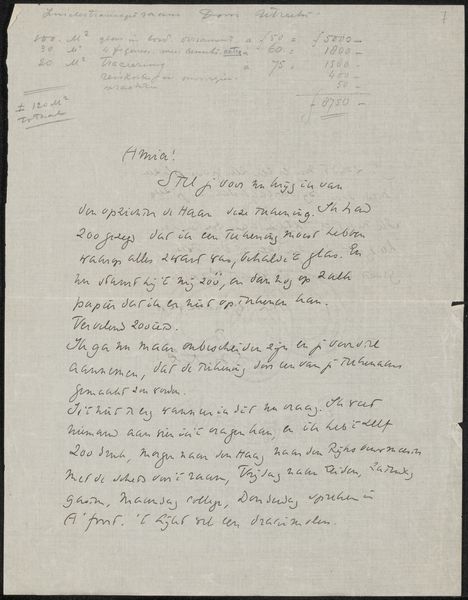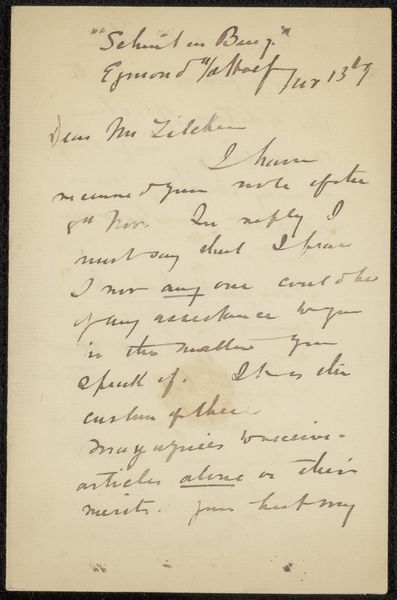
drawing, paper, ink
#
drawing
#
paper
#
personal sketchbook
#
ink
#
ink drawing experimentation
#
calligraphy
Copyright: Rijks Museum: Open Domain
Editor: This ink drawing on paper is called "Brief aan Filippo Tessaro" by Franz Melchers. It was made sometime between 1878 and 1907. It really gives the sense of intimacy, like we’re looking at something private. I wonder, what do you see in this piece? Curator: The cultural weight here lies in the very act of letter-writing itself. It represents a specific mode of communication, one steeped in ritual and personal expression. Consider the carefully crafted script; each flourish of the pen becomes a symbol of intent. Can you decipher what emotional nuances the handwriting itself conveys? Editor: It seems kind of formal, but also hurried? Like the writer had something important to say, but not a lot of time. Curator: Precisely. And what enduring values do you think are present within the culture of correspondence? Think about trust, sincerity, and the intention of preservation of ideas. Do letters carry the same cultural relevance today, compared to say, a digital form of communication? Editor: I guess letters feel more… permanent? And more personal somehow, especially since you can actually see someone’s handwriting. It definitely feels different than an email. Curator: Exactly! So, this letter, in itself, stands as a cultural artifact, carrying the weight of tradition while also revealing individual character through the script and style of the writing. It evokes questions around presence and absence, intention and reception – themes that resonate through art history. Editor: That's a different way to see it; it is like reading a little story through handwriting and words. Curator: Yes, by examining the form, we can explore the symbolism embedded in this work of art.
Comments
No comments
Be the first to comment and join the conversation on the ultimate creative platform.
